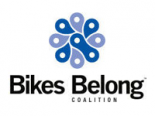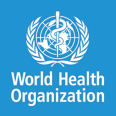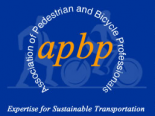Making the Equity Case: Working with Transit - 6/6/2012 (Alliance) Transportation advocates across the country are conducting campaigns that shape equitable policies and investments to ensure access and economic opportunity for low-income people and communities of color. Bicycle and pedestrians organizations have the important opportunity to work with transit advocates on collaborative, comprehensive efforts to build just, inclusive communities of opportunity. On this Mutual Aid call, panelists Anita Hairston from Policy Link, Ya-Ting Liu from Transportation Alternatives and Cheryl King from the Metropolitan Atlanta Regional Transit Authority shared insights and ideas for making the equity case and initiating successful campaigns at the local level.
Transportation advocates across the country are conducting campaigns that shape equitable policies and investments to ensure access and economic opportunity for low-income people and communities of color. Bicycle and pedestrians organizations have the important opportunity to work with transit advocates on collaborative, comprehensive efforts to build just, inclusive communities of opportunity. On this Mutual Aid call, panelists Anita Hairston from Policy Link, Ya-Ting Liu from Transportation Alternatives and Cheryl King from the Metropolitan Atlanta Regional Transit Authority shared insights and ideas for making the equity case and initiating successful campaigns at the local level.
Making the Equity Case: Working with Transit Tip Sheet (PDF)
Call recording (MP3)
A Heavy Load: The Combined Housing and Transportation Burdens of Working Families
This 2006 report from the Center for Housing Policy examines the combined financial burden of housing and transportation costs and the correlations between the two.
A Heavy Load (PDF) (4.38MB)
Aging in Place, Stuck without Options (Transportation for America) This June 2011 report from Transportation for America ranks metro areas by the percentage of seniors with poor access to public transportation, now and in the coming years, and presents other data on aging and transportation.
This June 2011 report from Transportation for America ranks metro areas by the percentage of seniors with poor access to public transportation, now and in the coming years, and presents other data on aging and transportation.
Aging in Place, Stuck without Options (PDF)
American's Tomorrow: Equity is the Superior Growth Model (PolicyLink)
 This 2011 report from PolicyLink lays out a vision for an equity-driven growth model that brings together two traditionally separate agendas: the agenda to grow new jobs and bolster long-term competitiveness, and the agenda to ensure that all—especially low-income people and people of color—have the opportunity to benefit from and co-create that growth. It highlights the equity-related challenges that the U.S. needs to address, reviews current and future demographic shifts and suggests some initial steps toward building an equity-driven growth model based on the innovative work being done in communities across the country.
This 2011 report from PolicyLink lays out a vision for an equity-driven growth model that brings together two traditionally separate agendas: the agenda to grow new jobs and bolster long-term competitiveness, and the agenda to ensure that all—especially low-income people and people of color—have the opportunity to benefit from and co-create that growth. It highlights the equity-related challenges that the U.S. needs to address, reviews current and future demographic shifts and suggests some initial steps toward building an equity-driven growth model based on the innovative work being done in communities across the country.
America's Tomorrow: Equity is the Superior Growth Model (PDF)
"PRECAUCIÓN: Tu Familia También Usa La Bicicleta" PSA (Los Angeles County Bicycle Coalition) "PRECAUCIÓN: Tu Familia También Usa La Bicicleta" or "Precaution: Your family also uses the bicycle" is a Spanish-language PSA message from 2012 resulting from a collaboration with City of Lights Volunteers and day laborers in Los Angeles. There is an also video describing process LACBC and City of Light organizers took to create the PSA.
"PRECAUCIÓN: Tu Familia También Usa La Bicicleta" or "Precaution: Your family also uses the bicycle" is a Spanish-language PSA message from 2012 resulting from a collaboration with City of Lights Volunteers and day laborers in Los Angeles. There is an also video describing process LACBC and City of Light organizers took to create the PSA.
http://vimeo.com/37971012 (URL)
http://vimeo.com/32275829 (URL)
Bicycle and Pedestrian Crash Maps (Los Angeles County Bicycle Coalition) In 2011, the Los Angeles County Bicycle Coalition used traffic and demographic data to highlight the disproportionate risk of crashes for bicyclists and pedestrians in low-income communities in the LA region.
In 2011, the Los Angeles County Bicycle Coalition used traffic and demographic data to highlight the disproportionate risk of crashes for bicyclists and pedestrians in low-income communities in the LA region.
Bicycle and Pedestrian Crashes and Population Density (PDF)
Bike and Pedestrian Crashes and Median Household Income (PDF)
Bicycle and Pedestrian Crash Hotspots (PDF)
Bicycle Leadership Conference Demographics Survey Report (Bikes Belong) This 2010 report presents the survey results collected in conjunction with the Bicycle Leadership Conference. More than 2,000 cycling enthusiasts—including nearly 500 women— were surveyed about their bicycling habits, purchases, and experiences.
This 2010 report presents the survey results collected in conjunction with the Bicycle Leadership Conference. More than 2,000 cycling enthusiasts—including nearly 500 women— were surveyed about their bicycling habits, purchases, and experiences.
Bicycle Leadership Conference Demographics Survey Report (PDF) (2.6 MB)
Bicycling is for Everyone (Los Angeles County Bicycle Coalition, via Streetsblog) This June 2011 article published on LA Streetsblog by Allison Mannos, of the Los Angeles County Bicycle Coalition and Adrian Leung examines the "Connections Between Cycling in Developing Countries and Low-Income Cyclists of Color in the U.S." The authors explore the notion that, "outreach efforts should expand ideas of target communities, not only to fill the ranks with as many bicycling voices as possible, but also to create a comprehensively transformative movement."
This June 2011 article published on LA Streetsblog by Allison Mannos, of the Los Angeles County Bicycle Coalition and Adrian Leung examines the "Connections Between Cycling in Developing Countries and Low-Income Cyclists of Color in the U.S." The authors explore the notion that, "outreach efforts should expand ideas of target communities, not only to fill the ranks with as many bicycling voices as possible, but also to create a comprehensively transformative movement."
Bicycling Is For Everyone (PDF)
County Health Rankings (RWJS) The County Health Rankings website from the Robert Wood Johnson Foundation "provides access to 50 state reports that rank each county according to its health outcomes and the multiple health factors that determine a county's health." The County Health Calculator is an interactive app that shows the impact education and income have on health. (PDF)
The County Health Rankings website from the Robert Wood Johnson Foundation "provides access to 50 state reports that rank each county according to its health outcomes and the multiple health factors that determine a county's health." The County Health Calculator is an interactive app that shows the impact education and income have on health. (PDF)
County Health Rankings
County Health Calculator
Cycling for a Few or for Everyone: The Importance of Social Justice in Cycling Policy
This 2009 paper by Professor John Pucher and Professor Ralph Buehler, talks about social justice in cycling policy. (PDF)(160KB)
Cycling for a Few or for Everyone: The Importance of Social Justice in Cycling Policy
Do All Children Have Places to Be Active? (Active Living Research) This 2011 report from Active Living Research examines the growing body of evidence indicating that minority and lower-income communities do not provide as many built and social environmental supports for physical activity. It also summarizes research on racial, ethnic and economic disparities in obesity and physical activity rates among children.
This 2011 report from Active Living Research examines the growing body of evidence indicating that minority and lower-income communities do not provide as many built and social environmental supports for physical activity. It also summarizes research on racial, ethnic and economic disparities in obesity and physical activity rates among children.
Do All Children Have Places to Be Active? (PDF)
Economic Burden of Health Inequalities in the U.S. (Joint Center for Political & Economic Studies) This study from the Joint Center's Health Policy Institute estimates economic burden of health disparities in the United States using three measures: (1) direct medical costs of health inequalities, (2) indirect costs of health inequalities, and (3) costs of premature death.
This study from the Joint Center's Health Policy Institute estimates economic burden of health disparities in the United States using three measures: (1) direct medical costs of health inequalities, (2) indirect costs of health inequalities, and (3) costs of premature death.
Economic Burden of Health Inequalities Fact Sheet (PDF)
Engaging Communities of Color (Los Angeles County Bicycle Coalition, Active Transportation Alliance) In this presentation, panelists Adolfo Hernandez, Advocacy Director for the Active Transportation Alliance in Chicago, and Alexis Lantz, Planning and Policy Director for the Los Angeles County Bicycle Coalition, discussed engaging communities of color. They highlighted partnering opportunities, social equity, relationship building, and other challenges facing our movement in this area. The presentation led into a group discussion, followed by break-out activities, designed to allow participants to identify how their organization can expand these opportunities to build their community.
In this presentation, panelists Adolfo Hernandez, Advocacy Director for the Active Transportation Alliance in Chicago, and Alexis Lantz, Planning and Policy Director for the Los Angeles County Bicycle Coalition, discussed engaging communities of color. They highlighted partnering opportunities, social equity, relationship building, and other challenges facing our movement in this area. The presentation led into a group discussion, followed by break-out activities, designed to allow participants to identify how their organization can expand these opportunities to build their community.
Alexis- City Of Lights Presentation (PDF)
Equity Caucus Guiding Principles for the Transportation Authorization (Transportation For America) The Statement of Principles of the Equity Caucus at Transportation for America —formed by the nation's leading civil rights, community development, racial justice, economic justice, faith-based, health, housing, labor, environmental justice, tribal, public interest, women's, and transportation organizations in 2011—drives transportation policies that advance economic and social equity in America.
The Statement of Principles of the Equity Caucus at Transportation for America —formed by the nation's leading civil rights, community development, racial justice, economic justice, faith-based, health, housing, labor, environmental justice, tribal, public interest, women's, and transportation organizations in 2011—drives transportation policies that advance economic and social equity in America.
Equity Caucus Statement of Principles (PDF)
Equity in Transportation for People with Disabilities (AAPD & The Leadership Conference)
This report from 2012 addresses equity in transportation for people with disabilities from the perspectives of accessibility, legislation, funding, safety and rural communities.
final-transportation-equity-disability.pdf (PDF)
Evaluating Transportation Equity This 2006 paper by Todd Litman of the Victoria Transport Policy Institute provides guidance on incorporating equity impacts into transportation planning. It defines various types of equity, discusses ways of evaluating equity, and describes practical ways of incorporating equity objectives into decision-making.
This 2006 paper by Todd Litman of the Victoria Transport Policy Institute provides guidance on incorporating equity impacts into transportation planning. It defines various types of equity, discusses ways of evaluating equity, and describes practical ways of incorporating equity objectives into decision-making.
Evaluating Transportation Equity (PDF) (268KB)
Exploring the Social Determinants of Health - Race & Socioeconomic Status (RWJF) This 2011 study from the Robert Wood Johnson Foundation is one in a series of ten issue briefs on the social determinants of health. It identifies differences in health among racial or ethnic groups in the U.S. across measures ranging from infant mortality and diabetes prevalence to overall death rates.
This 2011 study from the Robert Wood Johnson Foundation is one in a series of ten issue briefs on the social determinants of health. It identifies differences in health among racial or ethnic groups in the U.S. across measures ranging from infant mortality and diabetes prevalence to overall death rates.
Exploring the Social Determinants of Health - Race & Socioeconomic Status (PDF)
Global Age-Friendly Cities: A Guide (World Health Organization) 12 April 2012. WHO's guide to age-friendly cities, that encourages active ageing by optimizing opportunities for health, participation and security in order to enhance quality of life as people age. Part 6 focuses on Transportation.
12 April 2012. WHO's guide to age-friendly cities, that encourages active ageing by optimizing opportunities for health, participation and security in order to enhance quality of life as people age. Part 6 focuses on Transportation.
Global age friendly cities Guide English.pdf (PDF)
Growing Smarter, Living Healthier: A Guide to Smart Growth and Active Aging (EPA) This 2009 report from the U.S. Environmental Protection Agency provides information on the fundamental principles of neighborhood and town design to promote awareness among older adults on why community design matters.
This 2009 report from the U.S. Environmental Protection Agency provides information on the fundamental principles of neighborhood and town design to promote awareness among older adults on why community design matters.
Growing Smarter, Living Healthier: A Guide to Smart Growth and Active Aging (PDF) (2.5 MB)
Health Disparities, Neighborhood Poverty, and Racial Composition (Johns Hopkins) This 2011 Johns Hopkins study seeks to determine if the relationship between segregation and health is due to the racial composition of neighborhoods and concentration of poverty. The study finds that place matters for three health measures, general health, mental health and diabetes, and that community-level poverty is a more important determinant of health status than racial composition.
This 2011 Johns Hopkins study seeks to determine if the relationship between segregation and health is due to the racial composition of neighborhoods and concentration of poverty. The study finds that place matters for three health measures, general health, mental health and diabetes, and that community-level poverty is a more important determinant of health status than racial composition.
Neighborhood_Poverty_and_Racial_Composition_Presentation_-_LaVeist_Gaskin_Trujillo.pdf
Housing & Transportation Affordability Index KnowledgePlex and the Urban Markets Initiative of the Brookings Institution present an online discussion about a new way to measure true affordability of housing: the Housing and Transportation Affordability Index. Incorporating housing costs with the costs associated with that location, this analytic tool enables developers, transportation planners, and individuals to uncover the hidden price of transportation that dramatically shapes household budgets. Watch their presentation online (registration is required but is free).
KnowledgePlex and the Urban Markets Initiative of the Brookings Institution present an online discussion about a new way to measure true affordability of housing: the Housing and Transportation Affordability Index. Incorporating housing costs with the costs associated with that location, this analytic tool enables developers, transportation planners, and individuals to uncover the hidden price of transportation that dramatically shapes household budgets. Watch their presentation online (registration is required but is free).
Housing & Transportation Affordability Index (URL)
Low-Income Women Intercept Survey (San Francisco Bicycle Coalition) This 2003 document is an analysis of an intercept survey of 416 San Francisco women conducted by David Binder Research, in partnership with the San Francisco Bicycle Coalition, to uncover attitudes and beliefs about bicycle transportation among low-income women in San Francisco.
This 2003 document is an analysis of an intercept survey of 416 San Francisco women conducted by David Binder Research, in partnership with the San Francisco Bicycle Coalition, to uncover attitudes and beliefs about bicycle transportation among low-income women in San Francisco.
Low-Income Women Intercept Survey (San Francisco Bicycle Coalition) (PDF) (90KB)
Social Capital and the Built Environment: The Importance of Walkable Neighborhoods (Leyden)
This 2003 study examined whether the built environment (i.e., the way we design and build our communities and neighborhoods) affects the degree to which people are involved in their communities and with each other.
Social Capital and the Built Environment: The Importance of Walkable Neighborhoods (PDF)(176KB)
Social Equity Agenda for Sustainable Transportation (Victoria Transport Policy) This March 2011 report focuses on the importance of including social equity and environmental justice into transport policy and systematic framework that highlights an overlooked reality - "that many people still suffer inequities in their ability to access public services and economic opportunities." The authors provide recommendations that seek to build broader coalitions among those who desire a more sustainable and equitable transportation system. (PDF)(160KB)
This March 2011 report focuses on the importance of including social equity and environmental justice into transport policy and systematic framework that highlights an overlooked reality - "that many people still suffer inequities in their ability to access public services and economic opportunities." The authors provide recommendations that seek to build broader coalitions among those who desire a more sustainable and equitable transportation system. (PDF)(160KB)
Social Equity Agenda for Sustainable Transportation
Socioeconomics of Urban Travel (NHTS) This is the fourth in a series of articles for Transportation Quarterly analyzing urban travel trends and differences in travel behavior among a range of socioeconomic groups. John Pucher and John L. Renne examine the 2001 National Household Travel Survey (NHTS), which was released in January 2003.
This is the fourth in a series of articles for Transportation Quarterly analyzing urban travel trends and differences in travel behavior among a range of socioeconomic groups. John Pucher and John L. Renne examine the 2001 National Household Travel Survey (NHTS), which was released in January 2003.
Socioeconomics of Urban Travel (PDF) (156KB)
Transit Access and Zero-Vehicle Households (Brookings Institute) Millions of zero-vehicle households live in areas well served by transit. Yet hundreds of thousands of zero-vehicle households live out of transit's reach, particularly in the South and in the suburbs. And those with transit access still cannot reach a majority of jobs in metro areas within 90 minutes. Based on these trends, this 2012 article argues that leaders must recognize these households' unique mobility needs and aim to improve job accessibility through sound policy
Millions of zero-vehicle households live in areas well served by transit. Yet hundreds of thousands of zero-vehicle households live out of transit's reach, particularly in the South and in the suburbs. And those with transit access still cannot reach a majority of jobs in metro areas within 90 minutes. Based on these trends, this 2012 article argues that leaders must recognize these households' unique mobility needs and aim to improve job accessibility through sound policy
Transit Access and Zero-Vehicle Households.pdf (PDF)
Transportation and Housing Fact Sheet (STTP)
This fact sheet from the Surface Transportation Policy Project (STTP) gives an overview of the often over-looked connection between housing and transportation and the disproportionate burden of transportation costs on low-income Americans.
STTP Transportation & Housing Fact Sheet (URL)
Transportation Funding Reform: Equity Considerations (AARP)![]() This 2012 report examines whether current or proposed transportation funding sources at local, state and federal levels of government are in some way inequitable for low-income people, rural residents, people with disabilities, or older adults.
This 2012 report examines whether current or proposed transportation funding sources at local, state and federal levels of government are in some way inequitable for low-income people, rural residents, people with disabilities, or older adults.
Transportation Funding Reform (PDF)
Transportation Funding Reform In Brief (PDF)
U.S. Immigrants and Bicycling: Two-Wheeled in Autopia (University of California- Los Angeles) This 2010 paper written by Michael Smart, a researcher at the University of California- Los Angeles, and published in Transport Policy, highlights the fact that immigrants are more likely than American-born residents to travel by bicycle and "explores the extent to which the use of bicycles by immigrants can be explained by variables such as income, age, automobile availability, and neighborhood characteristics." His findings suggest a large and significant ''immigrant effect,'' with some sending groups (such as those from East and Southeast Asia) more likely than are others to use bicycles after controlling for other factors.
This 2010 paper written by Michael Smart, a researcher at the University of California- Los Angeles, and published in Transport Policy, highlights the fact that immigrants are more likely than American-born residents to travel by bicycle and "explores the extent to which the use of bicycles by immigrants can be explained by variables such as income, age, automobile availability, and neighborhood characteristics." His findings suggest a large and significant ''immigrant effect,'' with some sending groups (such as those from East and Southeast Asia) more likely than are others to use bicycles after controlling for other factors.
U.S. Immigrants and Bicycling: Two-Wheeled in Autopia. (PDF)(176KB)
Understanding Mixed Income Transit Oriented Development (CTOD)![]() This 2011 presentation from the Center for Transit Oriented Development (CTOD) underscores the need for Mixed-Income TOD—coordination of land-use and transportation that connects residents to jobs, shopping and neighborhoods, reduces auto-dependence and transportation costs, provides affordable living to households of all incomes, and increases economic opportunities. It links to several resources, including the Mixed-Income TOD Action Guide and Website, designed to help advocates and city planners develop Mixed-Income TOD strategies. (PDF)
This 2011 presentation from the Center for Transit Oriented Development (CTOD) underscores the need for Mixed-Income TOD—coordination of land-use and transportation that connects residents to jobs, shopping and neighborhoods, reduces auto-dependence and transportation costs, provides affordable living to households of all incomes, and increases economic opportunities. It links to several resources, including the Mixed-Income TOD Action Guide and Website, designed to help advocates and city planners develop Mixed-Income TOD strategies. (PDF)
Understanding Mixed Income Transit Oriented Development
Where We Need to Go: A Civil Rights Roadmap for Transportation Equity (The Leadership Conference) The purpose of this paper from 2011 is to highlight an important opportunity for all segments of society to participate fully in the debates around our nation's transportation policy to ensure no community is left behind.
The purpose of this paper from 2011 is to highlight an important opportunity for all segments of society to participate fully in the debates around our nation's transportation policy to ensure no community is left behind.
Where We Need to Go- A Civil Rights Roadmap for Transportation Equity (PDF)
Women's Cycling Project (Association of Pedestrian and Bicycle Professionals) In the spring of 2010, the Association of Pedestrian and Bicycle Professionals (APBP) conducted an online questionnaire via Survey Monkey to investigate the factors that would induce women to bicycle more for transportation. The survey was advertised through various bicycling sites online, and included 37 questions pertaining to demographics, cycling behavior, safety/infrastructure concerns, and open-ended inquiries. The survey received a very strong response, with over 13,000 participants. When the survey closed in May, APBP partnered with the Department of Health Education at the University of North Carolina-Greensboro Department to analyze the results.
In the spring of 2010, the Association of Pedestrian and Bicycle Professionals (APBP) conducted an online questionnaire via Survey Monkey to investigate the factors that would induce women to bicycle more for transportation. The survey was advertised through various bicycling sites online, and included 37 questions pertaining to demographics, cycling behavior, safety/infrastructure concerns, and open-ended inquiries. The survey received a very strong response, with over 13,000 participants. When the survey closed in May, APBP partnered with the Department of Health Education at the University of North Carolina-Greensboro Department to analyze the results.
Women's Cycling Project website (URL)
Womens Cycling Survey- Analysis of Results (PDF)
Analysis of Open-Ended Questions: WHAT WOULD CAUSE YOU TO START OR INCREASE YOUR CYCLING? (PDF)
Analysis of Open-Ended Questions: WHAT REACTION DO YOU GET WHEN CYCLING FOR TRANSPORTATION? (PDF)
Analysis of Open-Ended Questions: WHY DO YOU USE YOUR BICYCLE FOR TRIPS? (PDF)

